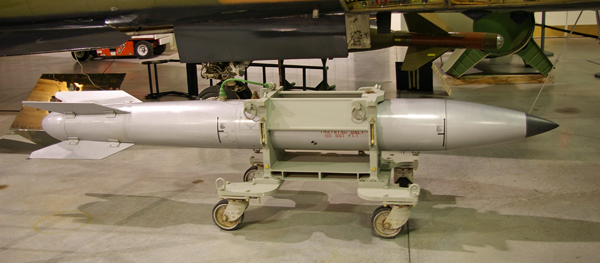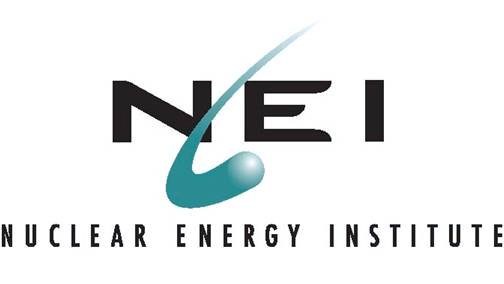Author: Burt Webb
-

Nuclear Weapons 701 – The U.S. Has Fifty Nuclear Bombs In Turkey – Part 1 of 2 Parts
Part 1 of 2 Parts
During the Cuban Missile Crisis between the U.S. and the Soviet Union, new U.S. nuclear missile batteries in Turkey became a point of contention in the bargaining to avoid an all-out nuclear war. Those missile batteries were removed in 1963 as a concession on the part of the U.S.
The U.S. and Turkey are both members of NATO. They are bound by treaty to defend the collective security of any and all twenty-eight members of NATO. Turkey is one of five NATO members which currently host U.S. nuclear weapons under a NATO nuclear sharing agreement in which the U.S. stations nuclear bombs in NATO countries which do not have their own nuclear arsenals. The other four NATO members with U.S. nuclear weapons include Belgium, the Netherlands, Germany and Italy.
The U.S. nuclear bombs in Turkey are referred to as B61s. They are gravity bombs intended to be dropped from airplanes. They are stationed at the Turkish Incirlik airbase which is about a hundred miles from the Turkish border. The B61 have a variable yield between three hundred kilotons and three hundred and forty kilotons. The Turkish air force used to have fighter-bombers which could deliver the B61s but they no longer have any planes which could drop the B61s. NATO and the U.S. have discussed the removal of the B61s from Incirlik for decades but they remain in Turkey. NATO members and Turkey in particular have lobbied against the removal of the B61s from Turkey because they are seen as a symbol of U.S. commitment.
The relationship between the U.S. and Turkey has been deteriorating since the aborted coup attempt in 2016. During the coup, one of the conspirators fled to Incirlik and sought refuge at the base which was refused. Since then, U.S. concerns about removing the B61 from Incirlik have risen and there has been much discussion about their fate.
Turkey is a signatory of the nuclear non-proliferation treaty which forbids them from acquiring nuclear weapons. However, recent comments from Turkey considering the question of the U.S. removal of the B61s indicate that President Erdogan believes that Turkey should have nuclear weapons and may seek to develop or buy them if the U.S. removes the B61s.
About a week ago, President Trump had a phone conversation with President Erdogan of Turkey. Following the call, President Trump announced that about fifty U.S. troops in northern Syria were being withdrawn. Turkey announced that it was going to clear a “safe zone” south of the Turkish-Syrian border and resettle several million refugees who fled to Turkey during the past few years of the Syrian civil war. The U.S. basically abandoned the Kurds in norther eastern Syria to fight off the Turkish incursion. The Kurds, abandoned by the U.S. have turned to Syria and Russia for help.
As the U.S. troops withdrew from the “safe zone”, they were deliberately targeted by the artillery of the advancing Turkish troops. The Pentagon issued a warning to Turkey that any further targeting of U.S. troops by Turkish forces would result in “immediate defensive action” from the U.S. troops. Such a potential deadly conflict between U.S. troops and Turkish troops is unprecedented in the NATO alliance.
Please read Part 2 -

Geiger Readings for Oct 16, 2019
Ambient office = 142 nanosieverts per hour
Ambient outside = 97 nanosieverts per hour
Soil exposed to rain water = 98 nanosieverts per hour
Avocado from Central Market = 79 nanosieverts per hour
Tap water = 103 nanosieverts per hour
Filtered water = 85 nanosieverts per hour
-

– Radioactive Waste 419 – National Resource Defense Council Briefs Congress On Handling Spent Nuclear Fuel – Part 3 of 3 Parts
Part 3 of 3 Parts (Please read Part 1 and Part 2 first)
Talking Point #3 – The reprocessing of spent nuclear fuel holds great promise.
It has been suggested that reprocessing spent nuclear fuel to produce more nuclear fuel will solve the nuclear waste problem. However, reprocessing does not just produce more fuel for nuclear reactors, it also produces plutonium, which increases the risk of nuclear weapons proliferation. In addition, reprocessing does not consume all the nuclear waste in spent nuclear fuel. It also generates its own stream of toxic radioactive waste. The Cold War production of nuclear weapons resulted in terribly polluted sites in Washington, South Carolina and Idaho.
Even if the radioactive byproducts of reprocessing are ignored, reprocessing is just not economical. Plants that can burn reprocessed nuclear fuel are even more expensive than conventional nuclear power reactors which are already becoming too expensive to build. In reality, reprocessing of spent nuclear fuel is simply not a viable idea.
Talking Point #4 – Nuclear power can help mitigate climate change.
With respect to climate change, nuclear power costs too much and takes too long to license and build to be of much use in climate change mitigation. While it is true that operating nuclear power plants do not emit greenhouse gases, their construction does produce a lot of carbon dioxide. There have been significant impacts on the environment from the production of nuclear power. Two major issues are risk of radiation release and contamination of water. One issue that does not get much press is the fact that climate change itself will be a threat to nuclear power plants. Both sea level rise and heat wave challenge the safety and dependability of nuclear power plants. Nuclear power reactors have had to be temporarily shut down because cooling water became too warm to be used to cool them.
The NRDC has a clean energy pathway that will be cost effective in reaching a low carbon future. The plan allows the role of nuclear power to continue to decline. It is time for the U.S. to escape the treadmill of the talking points detailed above and embark on a new path that will allow the regulation of nuclear waste under standard environmental laws. This should improve the participation and acceptance of states in the quest to safely dispose of spent nuclear fuel.
The NRDC plan will not solve the spent nuclear fuel disposal overnight but they believe that it could have real potential because it relies on well-established laws. They want to regulate nuclear waste like any other pollutant. The U.S. and the States should be sharing authority under foundational environmental statues.
If the Congress of the U.S. does not accept and implements the NRDC plan, it will have to develop a new plan for dealing with spent nuclear fuel. If something is not done in the near future, nuclear power plants may have to be shut down at a time when low carbon sources of power are critically important. -

Geiger Readings for Oct 15, 2019
Ambient office = 138 nanosieverts per hour
Ambient outside = 108 nanosieverts per hour
Soil exposed to rain water = 109 nanosieverts per hour
Blueberry from Central Market = 138 nanosieverts per hour
Tap water = 110 nanosieverts per hour
Filtered water = 86 nanosieverts per hour
-

Radioactive Waste 418 – National Resource Defense Council Briefs Congress On Handling Spent Nuclear Fuel – Part 2 of 3 Parts
Part 2 of 3 Parts (Please read Part 1 first)
Talking Point #1 – Yucca Mountain is a good choice for a repository for spent nuclear fuel from U.S. nuclear power reactors.
An old salt mine under Yucca Mountain in Nevada was chosen for a permanent geological repository for spent nuclear fuel in 1987. It was not selected because it was the best choice from a scientific and technical point of view. Originally, the plan was to carry out an adaptive, phased and science-based process to select the best site for the repository. However, Congress gave up on the idea of a scientific selection process because of the high cost of carrying out a comprehensive comparison of potential disposal sites. Congress proceeded to select the “most politically expedient” choice at that time which was Yucca Mountain.
Yucca Mountain never was a rational choice, and, in time, it was no long so expedient. Concerns were raised that there could be serious problems with ground water movement at Yucca Mountain that could penetrate the salt mine. Nevada politicians and community leaders have been able to present a united front against the use of Yucca Mountain for a repository. Nevada has a strong argument that science shows that Yucca Mountain repository would be a bad idea. Utah, Tennessee, South Dakota, New Mexico, and Texas have all rejected attempts to build a nuclear waste repository in their states. States must be more fully engaged and empowered in the quest for a site for a permanent geological repository for spent nuclear fuel.
Talking Point #2 – The problem of spent nuclear fuel disposal is slowing down the spread of nuclear power in the U.S.
An expert witness for the Nuclear Energy Institute testified at one of the Congressional hearings that nuclear waste was “the albatross on the neck of the nuclear industry.” However, this is not as true as some may think. Since 1957, it has been generally recognized that a deep permanent geological repository is the best way to dispose of spent nuclear fuel. However, despite attempts such as the Yucca Mountain repository project, in the past sixty years, no repository has been constructed and put into operation. While eighty thousand tons of nuclear waste has been piling up around the U.S., over one hundred commercial nuclear power plants were constructed. Two new reactors are currently being build at Plant Vogtle in Georgia with little consideration of how they will impact the nuclear waste disposal problem.
In reality, the real albatross around the neck of the U.S. nuclear industry is the huge upfront costs of constructing a nuclear reactor and the lack of economic competitiveness in the current U.S. energy markets. Decades of direct subsidies and special legal protection provided by the U.S. government have enabled the rise of nuclear power. Many U.S. nuclear power reactors are at risk of early closure because of safety issues and rising operating costs. They are unable to compete against low cost natural gas and renewable energy sources that currently dominate the U.S. energy marketplace.
New reactors were being constructed at the VC Summer plant in South Carolina. The project was cancelled due to cost overruns, scheduling delays and mismanagement after nine billion dollars had been spent. It is now estimated that completion of the Vogtle reactors in Georgia will cost twenty-eight billion dollars which is about twice what was original estimated when the project started. Ultimately, it is not the waste problem but rather the economics of nuclear power that is impeding the expansion of the U.S. nuclear industry.
Please read Part 3 -

Geiger Readings for Oct 14, 2019
Ambient office = 102 nanosieverts per hour
Ambient outside = 111 nanosieverts per hour
Soil exposed to rain water = 112 nanosieverts per hour
Crimini mushroom from Central Market = 77 nanosieverts per hour
Tap water = 115 nanosieverts per hour
Filtered water = 98 nanosieverts per hour
